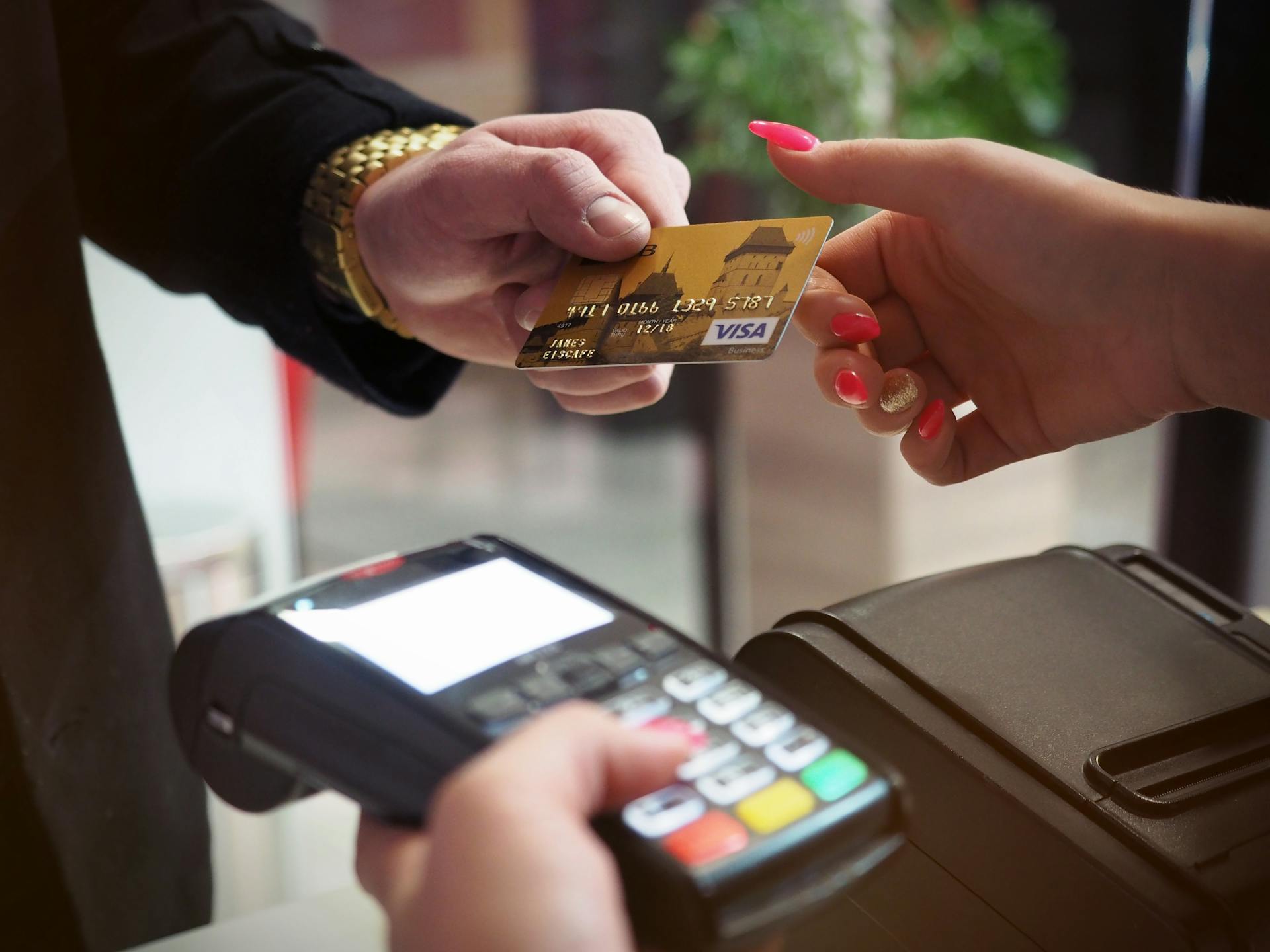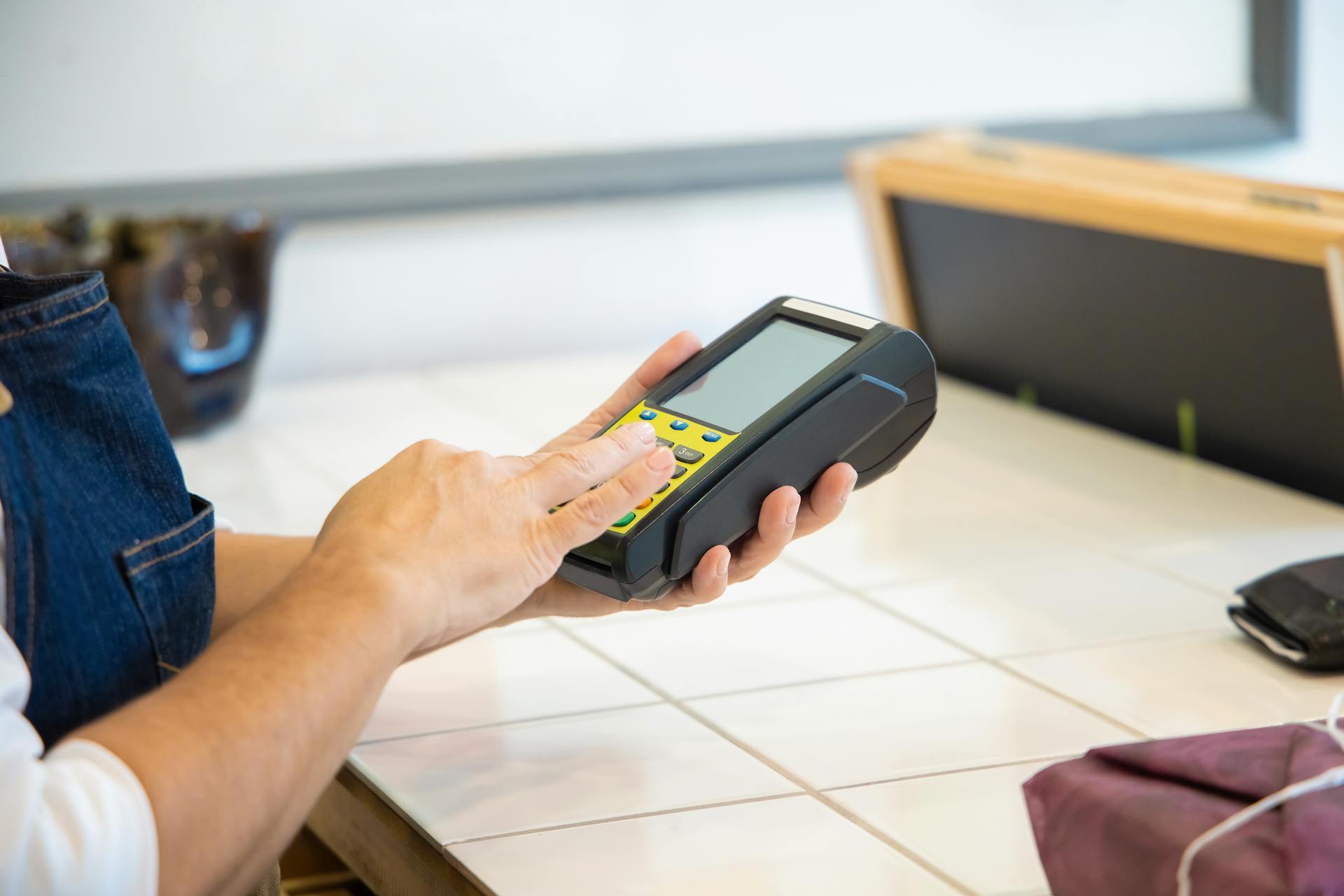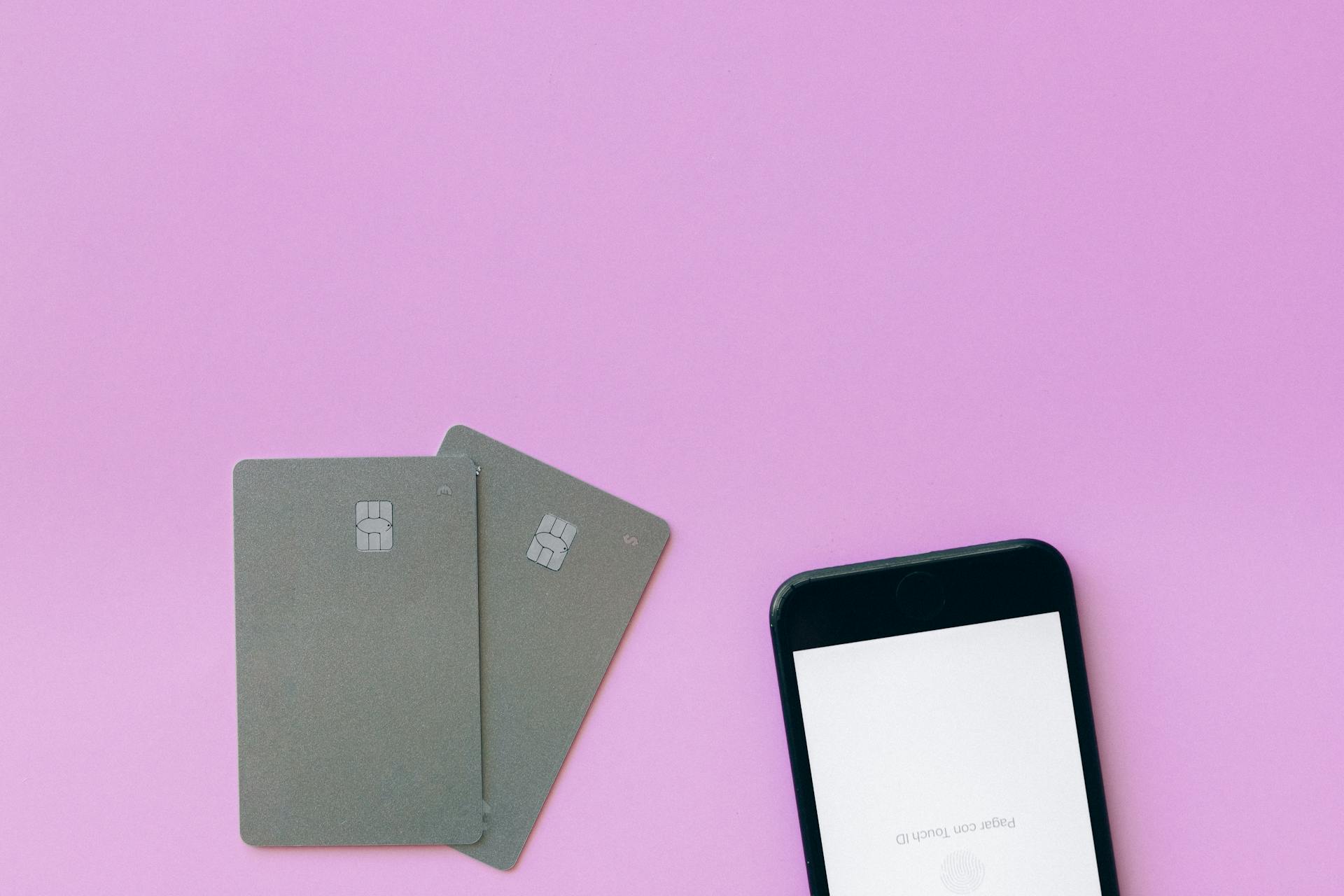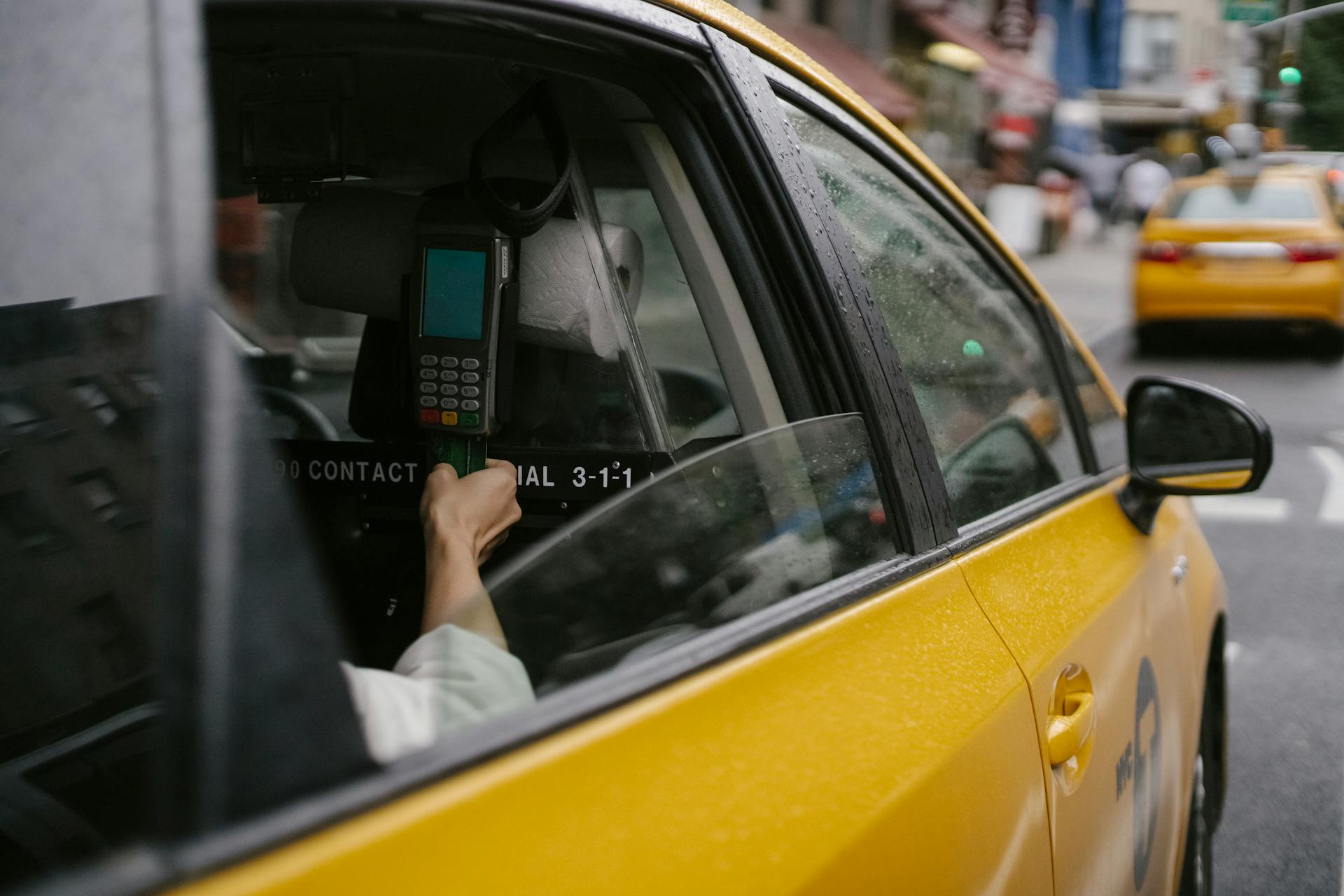
Skimming of credit cards is a common issue that affects many people. Credit card skimming devices can be installed at ATMs, gas pumps, and retail stores.
These devices are designed to capture your card information when you insert or swipe your card. They can also capture your PIN or card expiration date.
To avoid falling victim to credit card skimming, always inspect the card reader before using it. Look for any signs of tampering, such as loose screws or a card reader that feels loose.
Check the card reader for any additional attachments, such as a keypad or a small camera.
Related reading: Credit Card Reader Cleaning Cards
What is Skimming?
Skimming is a type of credit card fraud where thieves steal your card information to make unauthorized purchases.
Thieves can use a skimming device to capture your card details when you swipe your card at an ATM or a payment terminal.
These devices are often small and can be attached to the card reader, making them nearly invisible to the naked eye.
Some skimming devices can also be used to capture your PIN number, which is then used to make unauthorized withdrawals from your account.
Check this out: Can Debit Cards Be Used as Credit Cards
Warning Signs
You might be able to notice visual signs if a card skimmer is present, like a fake keypad placed over a real ATM keypad or even a tiny camera planted to record a PIN number when someone enters it into an ATM.
Card skimming thieves try to make these devices blend in with card readers, so the skimming devices can be tricky to spot. Be aware of areas that are at higher risk for card tampering.
Look for loose, crooked, or damaged payment systems. If it looks different than nearby payment systems, it's a red flag. Is there a pinhole above the keypad where a camera could be located?
Don't trust your instincts? Don't use it. It's good to trust your gut.
Suggestion: How Does Skimming Credit Cards Work
Protecting Against Skimming
To protect yourself from card skimming, use your card's chip or tap-to-pay feature instead of swiping your card. This is because the chip encrypts your information, making it harder to steal.
Additional reading: Do Credit Card Skimmers Work on Chip Cards
Pay attention to your surroundings when using an ATM or gas pump. Try to use well-lit areas and avoid locations that are secluded or have low foot traffic.
To identify a skimming device, check for alignment issues between the card reader and the panel underneath it. Compare the card reader to others at a neighboring ATM or gas pump and look out for any differences.
Here are some key things to check:
* Alignment issues between the card reader and the panel underneath it.Security tape or sticker over the cabinet panel.A thin plastic circuit board inserted into the card reader.Robustly manufactured card readers that can't easily be moved out of place.Thicker or out-of-place buttons on the keypad.
By following these tips, you can significantly reduce your risk of falling victim to card skimming.
Readers also liked: Prepaid Credit Card No Credit Check
How Skimmers Work
Card skimmers scan a card's magnetic strip to capture critical details, including the card number, expiration date, CVV security code, and cardholder name. This information can be used by criminals to withdraw cash from ATMs, create counterfeit cards, or make fraudulent purchases online or over the phone.
Some skimmers also use a fake keypad to capture the PIN when typed in, making it even easier for thieves to get what they need. This is why it's essential to be aware of your surroundings when using ATMs or making transactions.
Debit and credit cards that use chip technology are more protected against card skimmers since the microchip stores encrypted information. However, these cards still use magnetic stripes and remain at risk of skimming.
Here's what you need to know about the types of information that can be stolen through card skimming:
- Card number
- Expiration date
- CVV security code
- Cardholder name
Skimmers can also be used to capture your PIN, making it even more crucial to keep your personal information safe.
Protecting Against Skimmers
Pay with your card chip or use tap-to-pay instead of swiping, as it's safer than using the magnetic stripe. Using the chip on your card encrypts your information, making it tougher to steal.
Use gas pumps and ATMs in well-lit areas, as card skimming thieves are more likely to tamper with devices that are harder for employees to see.
Suggestion: Using Credit Cards to Pay off Other Credit Cards
Stick to ATMs and payment terminals owned by reputable brands in well-lit, safe areas with plenty of foot traffic. This reduces the risk of encountering a skimmer.
Regularly monitor your account and card statement for unusual activity or charges you don’t recognise. Enable push notifications from your bank to receive transaction alerts in real-time.
Cover your PIN when you enter it by hand, as this can prevent potential cameras from capturing it. Stay aware and trust your instincts if something seems suspicious.
Here are some signs of a skimmer:
- Adhesive residue around the reader or on your card after use
- The card reader doesn't have a flashing light
- The ATM looks rarely used or is located outside
- The card reader is misaligned or has a security tape or sticker that looks ripped or broken
If you suspect a skimmer, don't use the ATM or gas pump and report it to the business or police immediately.
What to Do If Suspected
If you suspect card skimming, contact your bank, credit union, or card issuer right away to freeze your credit card or debit card and dispute any unauthorized charges. They can help prevent identity theft and additional unauthorized charges.
Change your financial account passwords and PINs to add an extra layer of protection. This simple step can make a big difference in preventing further fraud.
Add a fraud alert to your credit report to prevent additional fraud. You can receive a free credit report annually from each of the three major credit bureaus: Equifax, Experian, and TransUnion.
Alert the business where you believe the card skimming occurred, so they can check their card readers for skimming devices and prevent additional theft.
Here are the steps to take if you suspect card skimming:
- Contact your bank, credit union, or card issuer.
- Change your financial account passwords and PINs.
- Add a fraud alert to your credit report.
- Alert the business where you believe the card skimming occurred.
Prevention and Detection
To avoid falling victim to credit card skimming, stick to ATMs and payment terminals owned by reputable brands in well-lit, safe areas with plenty of foot traffic.
Use contactless payments, like mobile and wearable wallets, whenever possible. This reduces the risk of a skimmer being installed on the terminal.
Regularly monitor your account and card statement for unusual activity or charges you don’t recognize. Enable push notifications from your bank to receive transaction alerts in real-time.
Cover your PIN when you enter it by hand. This simple step can prevent cameras from capturing your PIN.
To check for a skimmer, inspect the card reader and keypad. Look for alignment issues, security tape, or stickers that may have been tampered with.
Here are some signs to look out for:
- A card reader that sticks out at an odd angle or covers arrows in a panel
- Security tape or stickers that look ripped or broken
- A thin plastic circuit board inserted into the card reader
- Buttons on the keypad that look thicker than usual or out of place
If you notice any of these signs, avoid using the terminal and try another one.
Types of Payment and Devices
There are two primary types of devices used for skimming: ATM skimming devices and POS skimming devices. ATM skimming devices are inserted deep inside the card read slot of ATMs and can capture both magnetic stripe and EMV chip data.
ATM skimming devices can be difficult to detect, but there are some signs of tampering to look out for, such as inoperable lights, raised PIN pads with loose edges, or loose components or stickers in unusual locations.
POS skimming devices, on the other hand, are overlays that cover the top exterior of the POS terminal or just the keypad and EMV reader slot. These devices can also be designed to capture both magnetic stripe and EMV chip data, as well as keypad entries, including your PIN.
If this caught your attention, see: Magnetic Strip on Credit Cards
Some signs of tampering on POS terminals include loose edges on the plastic overlay, loose components, or stickers in unusual locations. You can gently pull up on the corners of the terminal or keypad's privacy shroud to check for these signs.
To protect yourself from both types of skimming devices, it's a good idea to inspect the equipment before using it and report any suspicious activity to the merchant.
Alternative Options
It's much more difficult for a thief to install a card skimmer on a point-of-sale (POS) system at a retail store, but it can happen.
Card skimmers can be installed on POS systems, making it harder to detect them.
Make sure the card reader looks as it should, as this can be a sign of a potential skimming device.
There may be no way to know if a restaurant is involved in a scam because cards are often handed to the server who can then swipe the card through a skimmer before giving it back to the customer.
See what others are reading: Market Basket Credit Card Skimmer
Means of Payment
Card-present fraud is not as common as card-not-present fraud, but it can still occur.
Card-not-present fraud is more common and can occur without the cardholder's knowledge.
The internet has made database security lapses particularly costly, with some cases involving millions of accounts being compromised.
Stolen cards can be reported quickly, but compromised accounts may be held by fraudsters for months, making it difficult to identify the source of the compromise.
Cardholders can mitigate this risk by checking their account frequently to ensure there are no suspicious or unknown transactions.
Most banks have free 24-hour telephone numbers to encourage prompt reporting of lost or stolen cards.
It's possible for a thief to make unauthorized purchases on a card before it's cancelled.
Here's an interesting read: Stolen Credit Cards
Types of Payment
There are several types of payment methods that are widely accepted today.
Contactless payment is a popular option, allowing users to make transactions by tapping their cards or devices on a payment terminal.
Credit cards are another common type of payment, offering rewards and benefits to cardholders.
Mobile payments, such as Apple Pay and Google Pay, are increasingly being used for everyday transactions.
Online payments, including digital wallets like PayPal, are also becoming more prevalent.
PayPal's digital wallet allows users to store their payment information and make transactions online.
Credit cards often have cashback rewards, which can be redeemed for cash or used to offset future purchases.
For another approach, see: Digital Credit Union Secured Credit Card
Atm Devices
ATM devices can be a risk to your financial security if not used carefully.
ATM skimming devices are often inserted deep inside the card read slot of ATMs and are nearly impossible to detect from the outside. These devices can capture both the data on your magnetic stripe and your card's EMV chip.
To limit your risk of becoming an ATM skimming victim, consider using ATMs inside financial institutions, interior bays with security cameras, or closest to the drive-up window. These ATMs are harder for criminals to target.
You might like: Credit Card Numbers with Security Code
Be aware of obvious signs of tampering at the ATM, such as inoperable or broken lights, raised PIN pads with loose edges, loose components, or stickers placed in unusual locations.
To protect your PIN, always shield your entry with another hand as much as possible to prevent it from being recorded by a "pin-hole" camera.
POS Devices
POS devices are a common target for scammers, but there are ways to protect yourself. POS skimming devices are overlays that cover the top of the POS terminal, designed to capture both the data on your magnetic stripe and your card's EMV chip.
These devices can be difficult to detect, but there are some signs of tampering to look out for. Inspect the exterior plastic edges of the POS terminal and keypad for obvious signs of tampering, such as loose parts or uneven edges.
Some merchants use seals on the sides of the POS terminals to avoid potentially compromising your PIN, but this is not foolproof. Using a credit card at POS terminals instead of a debit card can also help minimize the risk of PIN compromise.
If you notice any suspicious activity or signs of tampering, do not use the terminal and immediately bring it to the attention of the merchant. Always inspect the card reader before inserting your card to ensure it looks as it should.
Discover more: What Credit Score Does Chase Use for Credit Cards
Frequently Asked Questions
Can your credit card be skimmed if you tap?
While tap-to-pay credit cards are less susceptible to skimming, they're not completely immune to credit card data theft. Be cautious and stay informed to protect your card
What is the risk of card skimming?
Card skimming poses a significant risk of identity theft and unauthorized transactions, as sensitive card information such as card numbers and expiration dates can be stolen. This stolen data can be used to make unauthorized purchases and transactions.
Sources
- https://www.bellco.org/loans/understanding-card-skimming-how-to-protect-yourself/
- https://www.nerdwallet.com/au/credit-cards/card-skimmer
- https://en.wikipedia.org/wiki/Credit_card_fraud
- https://www.secretservice.gov/investigations/skimming
- https://www.forbes.com/advisor/credit-cards/how-to-spot-a-credit-card-skimmer/
Featured Images: pexels.com


